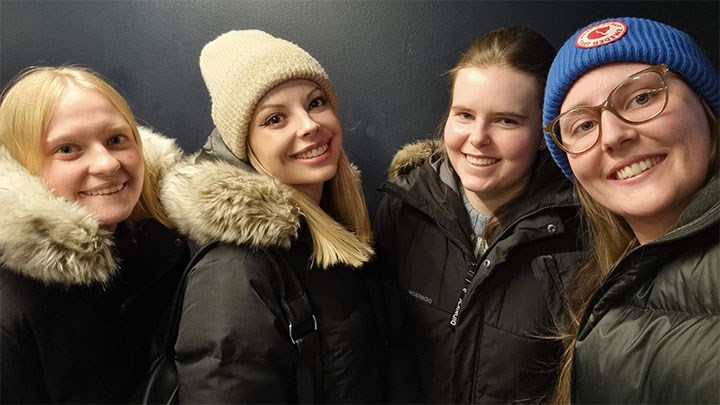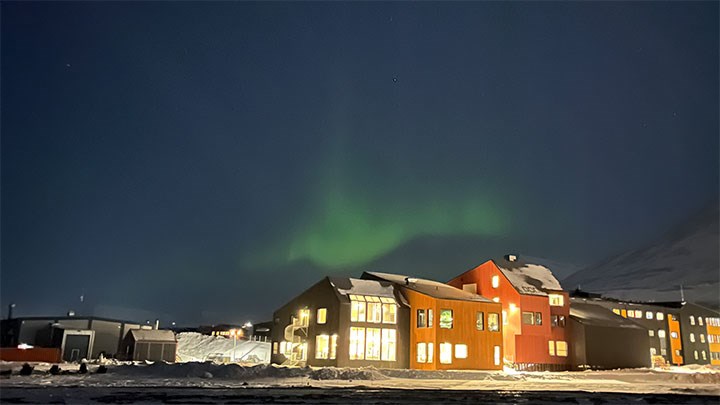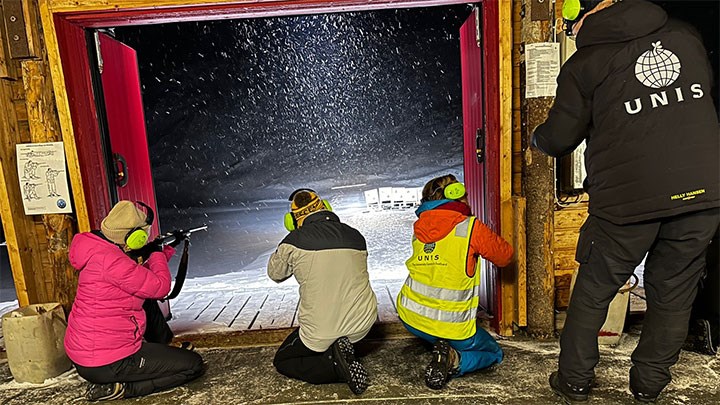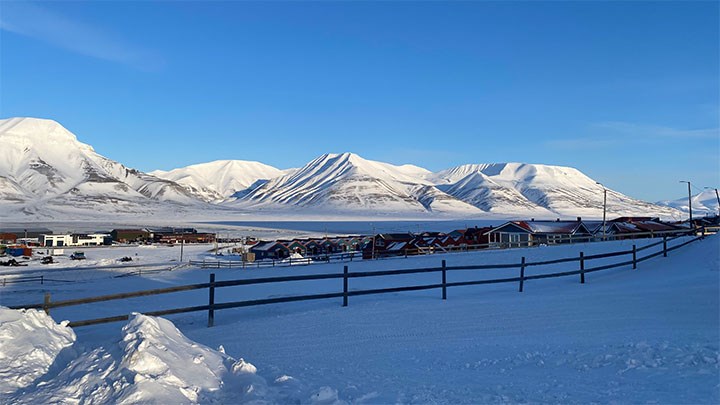Snowmobiles and rifles – everyday life in Svalbard

Nora Larsson, Tove Slettvoll, Mathilda Timner and Hanna Erléus will spend a whole semester studying in Svalbard. See more photos from Svalbard at the end of the article.
Örebro students Hanna, Nora, Mathilda, and Tove are studying environmental pollution on Svalbard as part of the Nordic Master’s Programme in Chemistry with a specialisation in Arctic Environmental Forensics.
“It’s an incredibly cool environment to live in – both in terms of weather, climate and society,” says Hanna Erléus.
Svalbard is a treeless tundra with surrounding mountains – and a fantastic winter scenery that is finally visible now that sunlight is returning, making its way over the mountaintops. The students lived in total darkness for the first few months in Svalbard.
“I admit that I was a little worried about what it would be like with 24 hours of darkness during the winter months. But it’ll soon pass, and daylight is gradually returning,” says Hanna Erléus.

Nora Larsson also felt slightly anxious about her stay in the Norwegian archipelago in the Arctic Ocean.
“At the same time, coming here and studying is such a unique opportunity. It may be the only time we’ll have the chance to go to Svalbard,” she says.
Students carry rifles – protection against polar bears
Together with their classmates Mathilda Timner and Tove Slettvoll, they will study for a whole semester at the University Centre on Svalbard (UNIS), the world’s northernmost research and education institution.
UNIS is in Longyearbyen, Svalbard’s largest inhabited area, with just over 2,000 inhabitants.
“The first thing we had to do was complete a safety training course to learn how to shoot. No one is allowed to leave the village without a rifle. So, while we’re here, we must carry with us a student rifle,” says Hanna Erléus.

As shooting polar bears is illegal, students are taught other strategies instead – using a weapon is supposed to be their last resort of self-defence.
“Although it is a little strange, at the same time, you don’t think much about it. It becomes normal,” says Tove Slettvoll.
Snowmobile training and the arctic cold
Getting to fieldwork in artic conditions requires a snowmobile. So, snowmobile training is also included in the student introduction.
“Yesterday, we rode 50 kilometres by snowmobile and were gone all day. Our goal was to collect samples from reindeer droppings, which we will analyse in search of metals and organic compounds,” says Tove Slettvoll.
Dressing for minus thirty degrees Celsius
“I had to buy a huge amount of clothes before coming here. It’s quite an experience dressing for freezing temperatures. It’s dreadfully cold – even our eyelashes froze,” says Hanna Erléus.
“We dress quite differently compared to home. I never thought I would walk around in thermal underwear, but now I do so every day,” says Nora Larsson.
A fantastic harmony
Everyday life in Svalbard consists of lectures at the university centre along with multiple opportunities for fieldwork in each course. In addition, there are many activities for the students, who come from all parts of the world.
“We all live nearby to one another, so it’s really easy to do things together after studies,” says Nora Larsson.
“There’s a fantastic harmony in our class,” says Mathilda Timner.

Despite the village being quite small, there is a lot to do. There is a public bath, grocery store, sports shop, gym, cinema, and restaurants.
“Right now, Tom Cruise is here with his film crew, shooting the next Mission Impossible movie,” Tove Slettvoll says.
Witnessing the consequences of climate change
The Nordic Master’s Programme in Chemistry with a specialisation in Arctic Environmental Forensics is to a large extent about pollution, chemicals and how we humans and the environment are affected by climate change. The consequences of climate change are clearly noticeable here in Svalbard.
“When we got here in January, it was zero degrees. People say that the warm winters are occurring more and more, although it does go up and down,” says Nora Larsson.
For ten to fifteen years ago, the fjord where the village is located was frozen ice – now it is open water.
“Climate change is not only making it warmer, but it also affects a lot of other things. We learn how the ecosystem is changing, that fish and other animals no longer thrive here but must move further north. Both disease and pollution have spread to new areas, for example, up to the Arctic,” explains Hanna Erléus.
How will you use your new knowledge and experiences from Svalbard?
“What we’re learning here goes hand in hand with what we’ve already studied, both in the Bachelor’s programme and the first semester of the Master’s programme. It feels inspiring to learn about the Arctic first-hand since it’s very relevant right now,” says Nora Larsson.
A whole semester in Svalbard is truly a remarkable experience providing students with unique experiences.
“At the same time, it’s sad to learn about our impact on the environment, animals, and humans. Even if it’s something you’re already aware of, it’s a whole different thing to study it and learn about it up close,” concludes Hanna Erléus.
Text: Anna Lorentzon
Photo: Private
Translation: Jerry Gray









